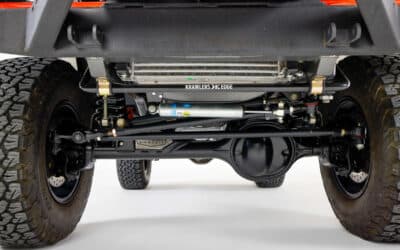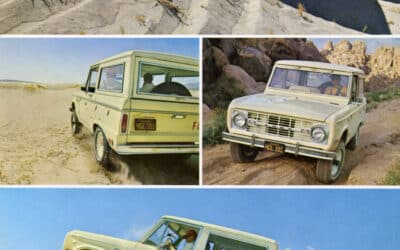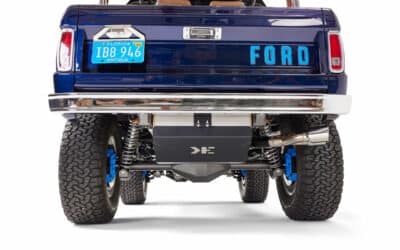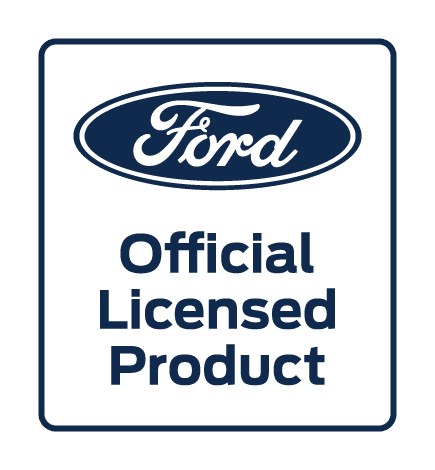In the world of automotive lovers, there’s a special place for old lifted trucks. They are more than just vehicles; they’re a blend of history, power, and personality. In this article, we’ll look into the world of old Ford trucks, exploring whether it’s worth the effort and cost to lift these classics.
Are they just for nostalgia, or do they offer a genuine, practical advantage to be driven now? We’ll tackle this question and more, including how they drive and the unique challenges they present, especially when it comes to 2WD models.
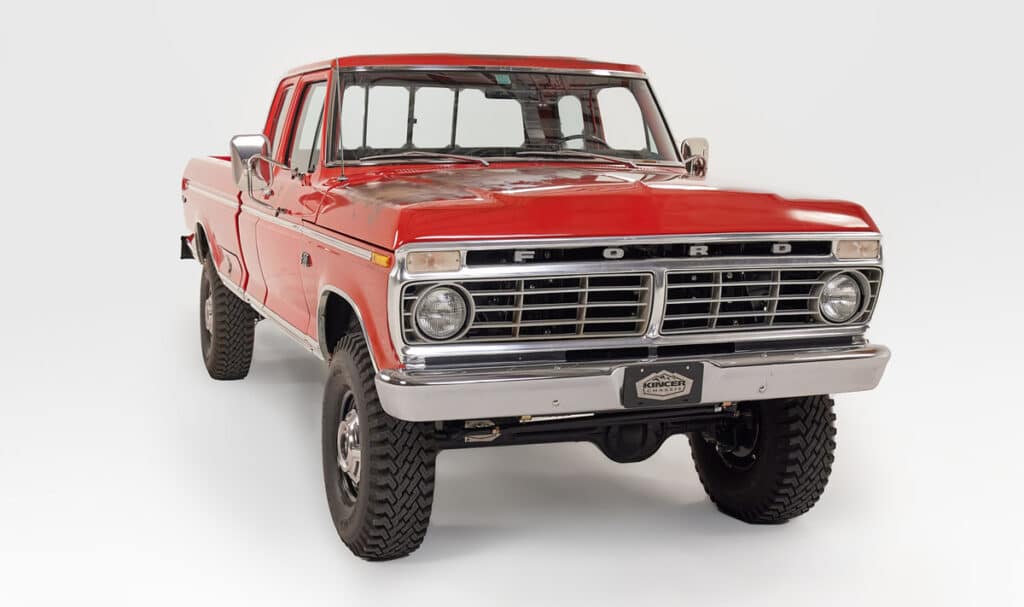
Table of Contents
The Appeal of Old Ford Trucks – American History
Classic Ford trucks, with their robust frames and timeless designs, have long been favorites among truck enthusiasts. Models like the Ford F-100, F-150, F-250, and F-350, ranging from 1965 to 1979, are particularly loved all across the world.
These trucks are not just vehicles; they are pieces of American history, each with a story to tell. They offer a unique combination of simplicity, durability, and style that is hard to find in modern vehicles.
We cherish these old Ford trucks for their ability to be transformed while still retaining their original charm. Their sturdy frames and spacious engine bays allow for a range of modifications, from engine upgrades to suspension lifts, without compromising their integrity.
The popularity of these models also means there is a thriving market for parts and expertise, making restoration and customization projects more accessible.
The appeal of these old trucks goes beyond their functionality. They represent a piece of American automotive history, a tangible connection to the past that continues to resonate with truck lovers today. Whether restored to their original glory or customized for modern performance, these old Ford trucks stand as a testament to the lasting impact of Ford’s engineering and design.
You can also still find sellers that are willing to part with these trucks at a decent price. Check online and see your options. You might have to travel but you can find some good deals and even find some places that will help with financing depending on your level of restoration.
We’ve saved money by figuring out what kinds of trucks we’re looking for and setting up alerts online to notify us. Some will let you get really specific with the type of trucks you’re looking for and color and where you want to buy it from. Find a killer deal in Mesa, AZ or an old farm truck in TX that you’re dying to have? Might be worth the trip.
Get comfortable making offers and get to know people’s sales tactics and you’re well on your way to building your dream truck.
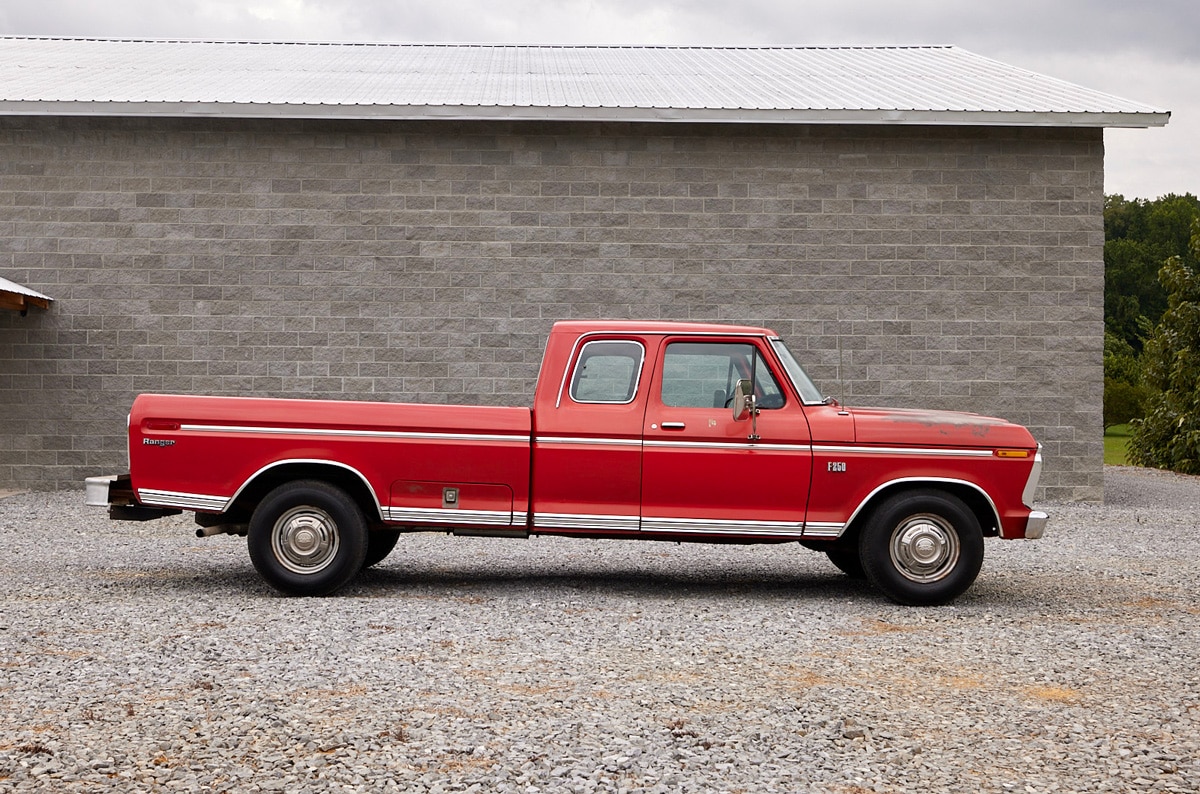
Lifted Truck: Pros and Cons
When it comes to lifting vintage trucks, there are several factors to consider. On the one hand, lifting can breathe new life into an old vehicle, enhancing its off-road capabilities and aesthetic appeal.
On the other hand, it can be a significant investment in time and money. This pros and cons list will discuss the practical benefits of lifting old trucks, such as improved ground clearance and the potential for increased performance. It will also address the potential downsides, including increased maintenance needs and the impact on the truck’s originality.
Pros:
- Improved Off-Road Capability: Higher ground clearance allows for better navigation over rough terrain.
- Enhanced Aesthetics: Lifted trucks often have a more commanding and rugged appearance.
- Customization Opportunities: Lifting allows for personalization and upgrades, like larger tires and enhanced suspension.
- Increased Visibility: Elevated height improves driver visibility on the road.
Cons:
- Higher Costs: Lifting a truck can be expensive, including the cost of the kit, installation, and potential upgrades.
- Altered Handling: The raised center of gravity can affect the truck’s stability and handling, especially at higher speeds.
- Increased Maintenance: Lifted trucks may require more frequent upkeep due to the added stress on the vehicle’s components.
- Fuel Efficiency: The increased weight and changes in aerodynamics can lead to reduced fuel efficiency.
Driving Dynamics of Lifted Trucks
How do lifted trucks drive compared to regular trucks? Lifting a truck changes its center of gravity, which can significantly affect handling and stability.
The elevated view and the commanding road presence is part of the appeal. This section will delve into the driving experience of a lifted old Ford truck, discussing the balance between on-road driveability and enhanced off-road performance. We’ll also touch on the modifications that can help maintain a comfortable ride while maximizing the truck’s rugged capabilities.
When it comes to the driving experience of lifted trucks, there are significant changes compared to standard trucks. Lifting a truck increases its center of gravity, which can affect handling and stability, particularly at higher speeds or during sharp turns. Off-road, however, lifted trucks benefit from increased ground clearance, allowing for better navigation over obstacles.

Modifications for a comfortable ride in lifted trucks include:
- Upgraded Suspension: Replacing the stock suspension with a high-quality lift kit and TracTive suspension can significantly improve ride comfort. Look for kits that include shock absorbers designed for lifted trucks. We could talk about KRide at this point as well.
- Tire Selection: Choosing the right tires is crucial. Larger, wider tires can provide better stability and smoother ride quality.
- Steering Stabilizers: These can help reduce steering vibrations and improve overall control, which is especially useful for lifted trucks.
- Adjusting Brakes: Upgrading the brake system is crucial to handle the increased weight of larger tires and altered dynamics of the lifted truck.
- Regular Maintenance: Keeping all components in top condition is vital. This includes regular checks on the suspension, tires, and steering system.
These modifications can help mitigate some of the handling challenges that come with a lifted truck, ensuring both a safe and enjoyable driving experience.
Common Challenges in Lifting Old Trucks
Lifting an old truck is not without its challenges. One of the main concerns is the impact on the vehicle’s structure. Older trucks, especially those that have been in use for decades, may have frame integrity issues that need to be addressed before lifting. Additionally, the suspension and steering systems often require significant upgrades to cope with the new height and weight distribution.
These trucks, with their years of service and wear, can present several issues that need careful consideration:
- Frame Integrity: Older trucks might have frame rust or fatigue, which can compromise the safety and effectiveness of the lift. Other frame issues to consider would be frame damage from accidents or other reasons that could result in a bent frame. It’s essential to thoroughly inspect and, if necessary, reinforce the frame before proceeding with any modifications.
- Suspension Concerns: The original suspension of older trucks is not designed for the increased stress of a lifted setup. Upgrading to a heavier-duty suspension is often required to ensure both performance and safety.
- Engine and Transmission Stress: Lifting a truck changes the driveline angles and can put additional strain on the engine and transmission. This may necessitate upgrades or modifications to these systems to handle the new demands.
- Steering Geometry: Lifting a truck alters its steering geometry, which can lead to issues like bump steer or poor handling. Proper alignment and potentially additional steering components may be required to maintain control and drivability.
- Braking Efficiency: The increased height and weight of a lifted truck can affect its stopping power. Upgrading the brake system is important to ensure that the vehicle can stop effectively.
Addressing these challenges requires a combination of mechanical expertise, proper planning, and sometimes significant investment. However, with the right approach and attention to detail, these obstacles can be overcome, leading to a safe and enjoyable lifted truck experience.
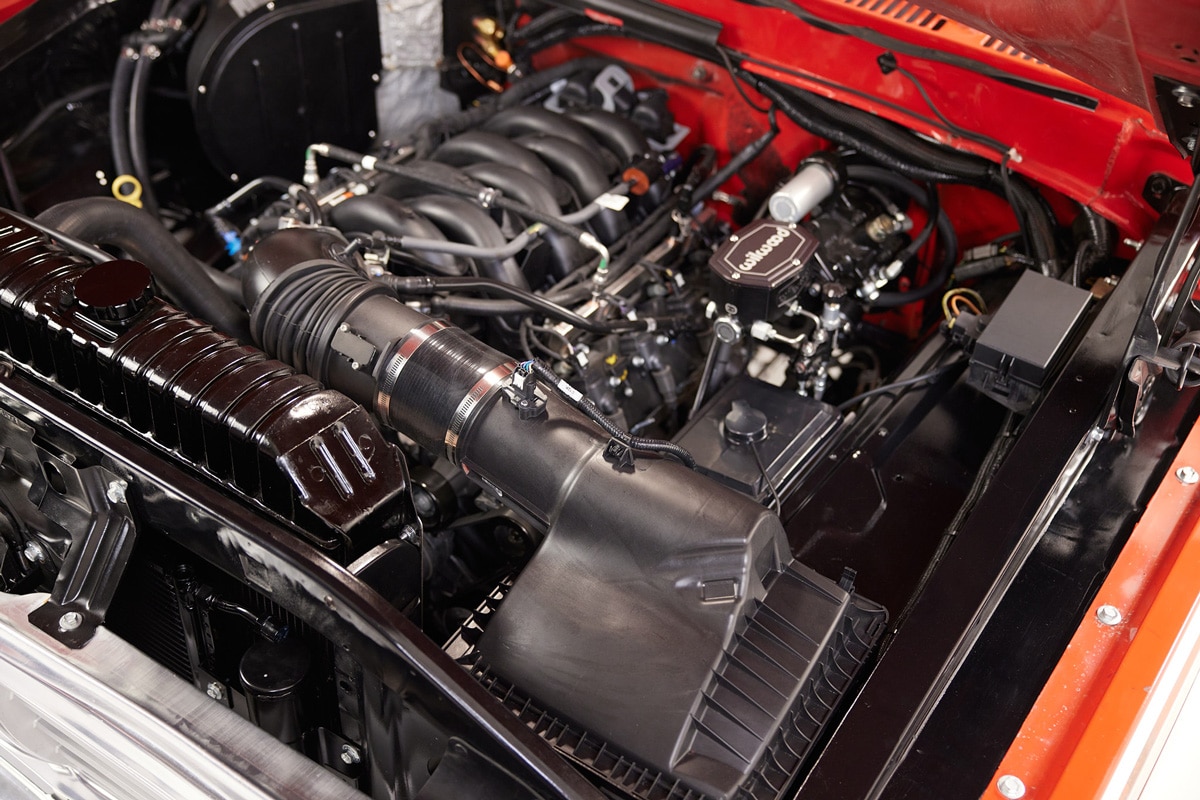
Converting a 2WD Ford Truck to 4WD
What if the old Ford truck you’re eyeing is a 2WD? This is where Kincer Chassis comes into play, offering conversion kits for classic Ford F-Series trucks to transform them from 2WD to 4WD. This conversion can significantly enhance the truck’s capabilities, making it suitable for a broader range of activities, especially off-roading. Converting a 2WD old Ford truck to a 4WD configuration is a significant but rewarding upgrade.
Key aspects of the conversion include:
- Installation of a Front Axle: This is the core component of converting to 4WD. A compatible front axle must be selected and installed.
- Transfer Case Addition: A transfer case is necessary to distribute power to both the front and rear axles.
- Driveshaft Modifications: The driveshafts may need to be replaced or modified to accommodate the new 4WD setup.
- Suspension Adjustments: The suspension system might require upgrades to handle the additional weight and functionality of the 4WD components.
- Additional Considerations: Other modifications, such as changes in the braking system and wheel alignment, are also essential.
While challenging, converting an old Ford from 2WD to 4WD can significantly increase its value and functionality. However, it requires careful planning, a clear understanding of the necessary modifications, and often a substantial investment.
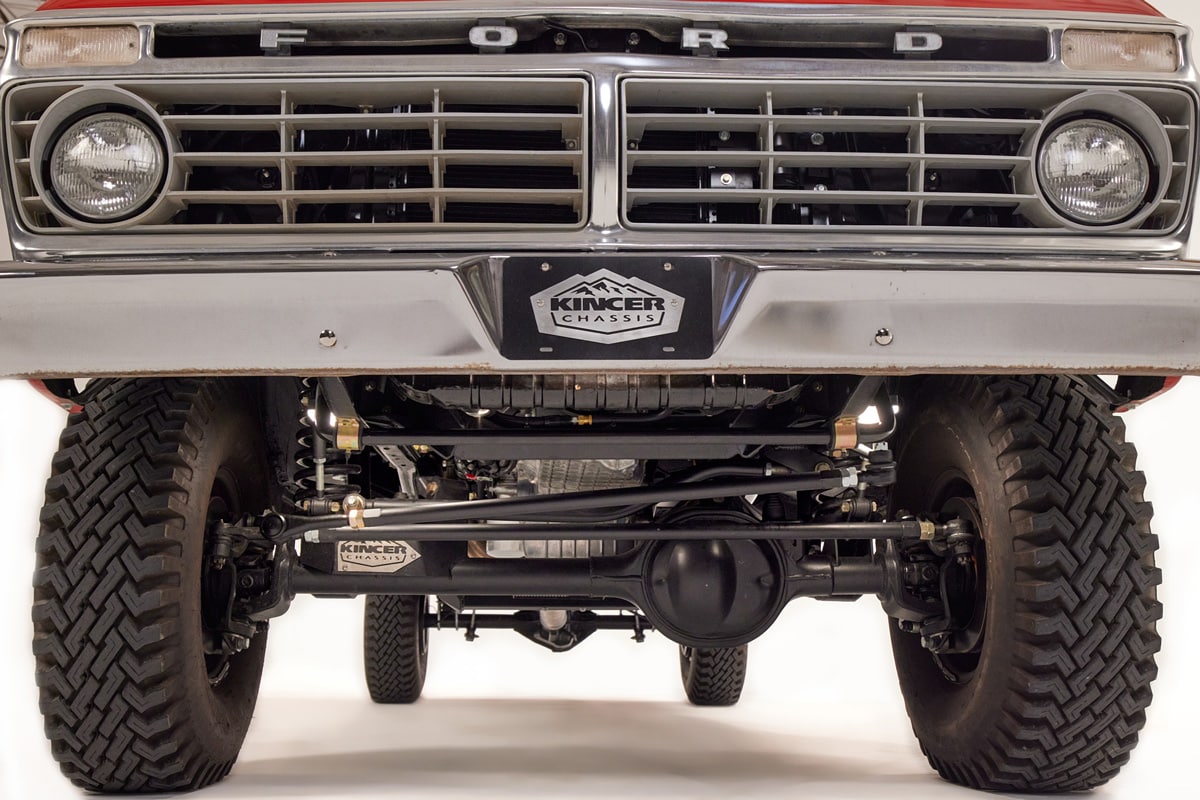
Price, Cost Analysis, and Resale Value
Investing in an old lifted truck, especially a classic Ford truck, is not just about the immediate costs. It’s also about understanding the long-term financial implications. Comparing these costs against the potential increase in the vehicle’s resale value will help you determine if the investment makes financial sense before you start the process.
Investing in lifting or converting an old Ford truck involves several cost factors:
- Initial Purchase: The cost of acquiring a suitable old Ford truck varies widely based on model, condition, and location.
- Lifting Costs: This includes the price of a lift kit and other necessary modifications like suspension upgrades and larger tires. Prices can range from a few hundred to several thousand dollars.
- Conversion Costs: If converting from 2WD to 4WD, the expenses include the conversion kit, additional parts like a front axle and transfer case, and labor costs. These can also run into thousands of dollars.
- Maintenance and Upkeep: Older lifted or converted trucks may require more frequent maintenance, impacting long-term costs.
- Resale Value: Well-executed lifts or conversions can increase a truck’s value. However, this depends on the quality of work and the market demand for such customizations.
It’s crucial to balance these costs with the personal value you get from the truck. While it’s not always a financially profitable investment, the satisfaction of owning and driving a customized classic truck can be significant.
You can read Want to learn more about the value of restored Ford trucks and Broncos? You can read this article on how we think restorations affect their price.
Conclusion
Lifting an old truck, especially a classic Ford, can be a worthwhile endeavor for people who value both the aesthetic and functional enhancements.
Lifted trucks offer a unique driving experience, with improved off-road capabilities but altered on-road dynamics due to the raised center of gravity. The key to a comfortable ride lies in thoughtful modifications like upgraded suspension systems, appropriate tire selection, and steering stabilizers.
However, lifting an old truck comes with its set of challenges. Common issues include potential frame integrity concerns and the need for significant upgrades to the suspension and steering systems. These challenges are manageable with proper planning and expert assistance.
Regarding the 2WD models, converting them to 4WD opens up new possibilities for performance and versatility, making it a valuable consideration for truck owners.
In summary, while lifting an old truck involves a considerable investment of time, money, and effort, the end result can be incredibly rewarding.
It’s a pursuit that appeals not just for its practical benefits but also for the sense of community and passion it fosters among truck drivers. Whether it’s for the love of restoration, off-roading adventures, or simply the joy of owning a piece of automotive history, at Kincer Chassis we know lifting an old truck can be a fulfilling project for those willing to take on the challenge.
FAQ Section
What are the main benefits of lifting an old truck?
The main benefits include improved off-road capability, a more rugged and commanding look, and the opportunity for personal customization.
Does lifting a truck affect its handling?
Yes, lifting a truck changes its center of gravity, which can impact stability and handling, especially at higher speeds or on uneven terrain.
Are lifted trucks more expensive to maintain?
Generally, yes. Lifted trucks often require more frequent maintenance due to the additional stress on various components.
Can I convert a 2WD old truck to 4WD?
Yes, it’s possible to convert a 2WD truck to 4WD, but it involves significant modifications, including installing a front axle, transfer case, and potentially upgrading the suspension and brakes.
Will lifting my truck affect its fuel efficiency?
Yes, lifting a truck can lead to reduced fuel efficiency due to increased weight and changes in aerodynamics.
Does lifting an old truck increase its resale value?
It can, especially if the modifications are well-executed and desirable in the market. However, this varies depending on the quality of work and the specific truck model for sale.

